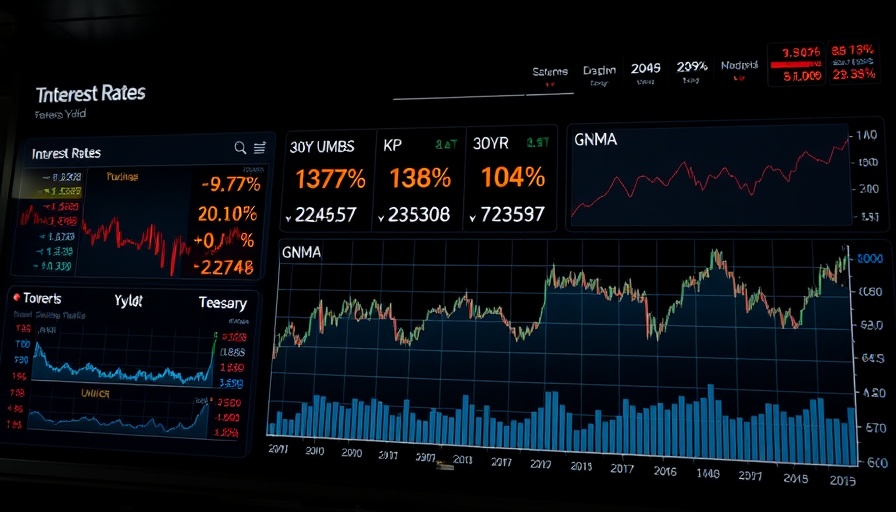
Understanding the Impact of the Fed's 'No Cut' Announcement
The latest announcement from the Federal Reserve regarding interest rates has stirred conversations in the financial community. While the term ‘no cut’ might sound mundane, it carries significant weight for consumers and businesses alike. With economic data revealing a fluctuation in retail sales and modest movements in bond markets, stakeholders are keenly awaiting insights from the Fed’s dot plot. This tool illustrates individual Fed members' perceptions of future rate changes, giving us an invaluable glimpse into the monetary policy landscape.
The Dot Plot: What It Represents
The dot plot is not just a snapshot; it is a forecasting tool that provides insight into the expected path of interest rates. Each dot represents a member’s opinion on where they believe rates will head over the next few years. This helps investors and the public gauge future rate hikes or cuts, directly influencing borrowing costs and financial decisions across the economy.
The Mixed Signals from Recent Economic Data
This week saw retail sales statistics that came in slightly below expectations, with retail sales dropping by 0.3% against a forecast of 0.1%. Moreover, core retail sales displayed a moderate increase of 0.4%, hinting at underlying strength in consumer spending. However, with rising import prices and mixed performance from export prices, the economy's health appears to be a balancing act—too much upside on one side could provoke caution, while inconsistencies could lead markets to juggle expectations.
Global Events Creating Tension in Financial Markets
Recent geopolitical headlines have caused a ripple effect in market dynamics. News coming from troubled regions can shift investor sentiment quickly. In times of international uncertainty, such as conflicts or economic instabilities, many investors lean towards a more defensive strategy, often leading to a rise in demand for safer assets like bonds, which explains the rally in bond prices seen as geopolitical tensions unfolded earlier this week.
Future Predictions: What to Watch for
As we anticipate Wednesday's dot plot announcement, analysts suggest that investors should prepare for volatility. If the Fed signals openness to moving rates up due to inflationary pressures, we could see increased costs for consumers on loans, mortgages, and credit cards. Conversely, a unanimous stance on maintaining current rates could bolster economic confidence and encourage spending across various sectors.
Practical Tips for Consumers and Small Business Owners
With uncertainty surrounding interest rates, both consumers and small business owners should consider the timing of their financial decisions. Here are a few actionable insights:
- Lock in Rates Early: If considering a mortgage or loan, look into locking your rate now. A potential rise in rates later this year could mean higher costs in the long run.
- Monitor Your Spending: With higher import prices, plan monthly budgets carefully. If borrowing costs increase, maintaining a sound financial footing is crucial.
- Stay Informed: Regularly check updates on economic indicators and the Fed's insights. Knowledge equips you to make timely and informed financial choices.
Conclusion
As the financial puzzle pieces continue to shift, staying informed about the Fed’s policies and economic indicators is essential. The dot plot isn't just a collection of anonymous dots—it represents a collective wisdom that can help shape your financial strategies. As interest rates remain a hot topic of discussion, take this moment to reassess your financial position and prepare for any ebb and flow in the market. Keep an eye on the headlines, because understanding the implications of the Fed's 'no cut' announcement may provide opportunities for smarter financial decisions moving forward.
 Add Row
Add Row  Add
Add 




Write A Comment